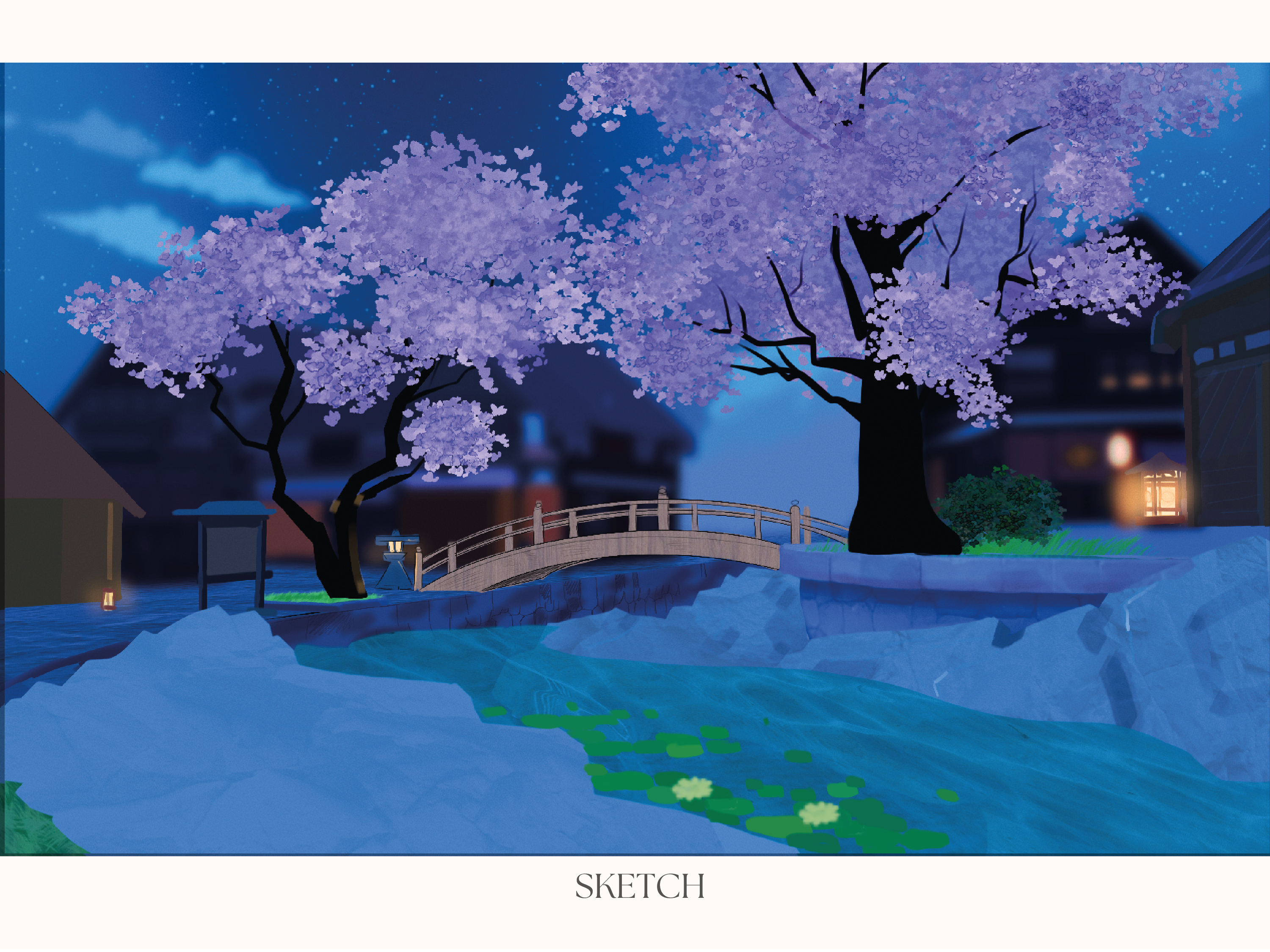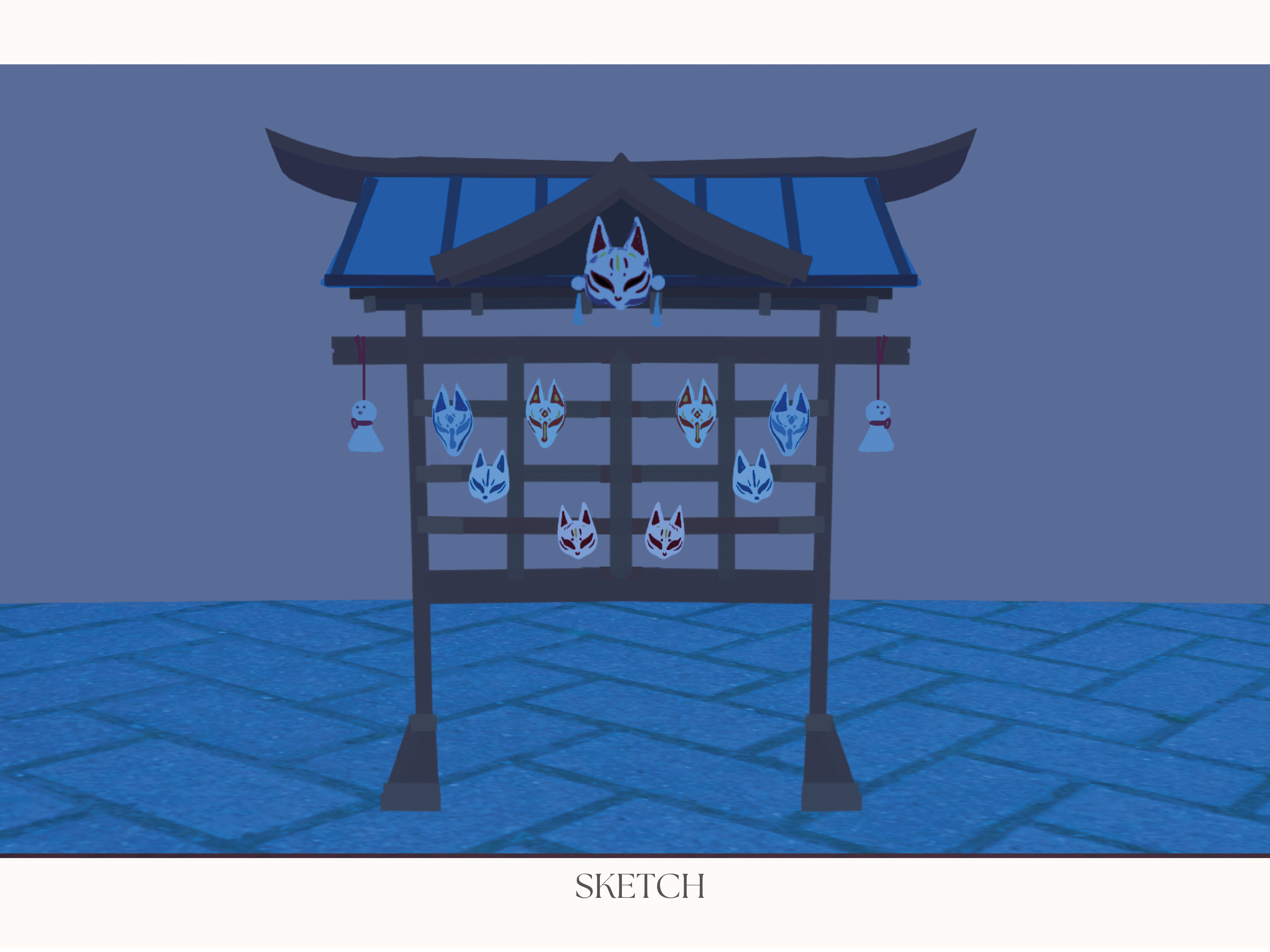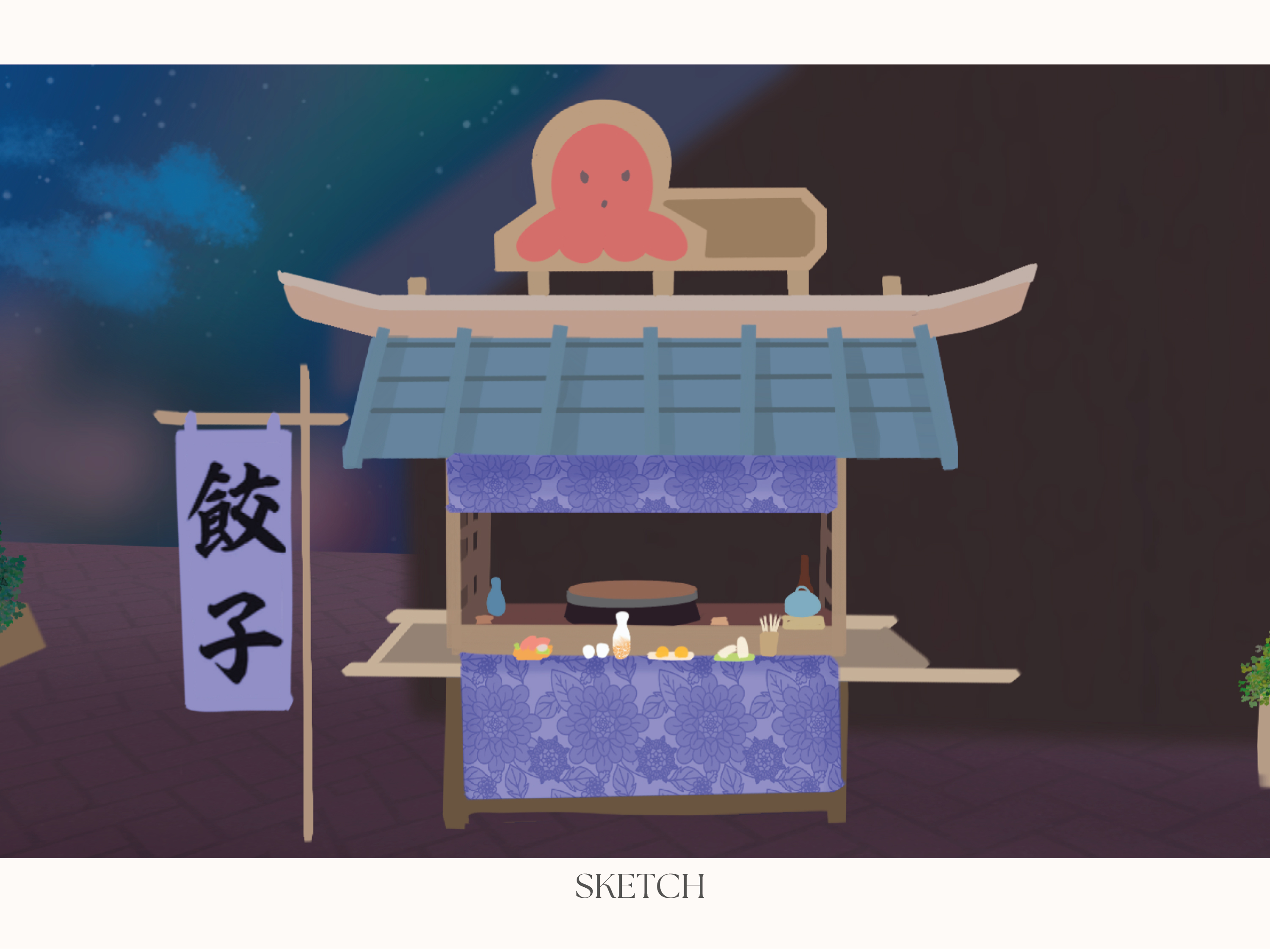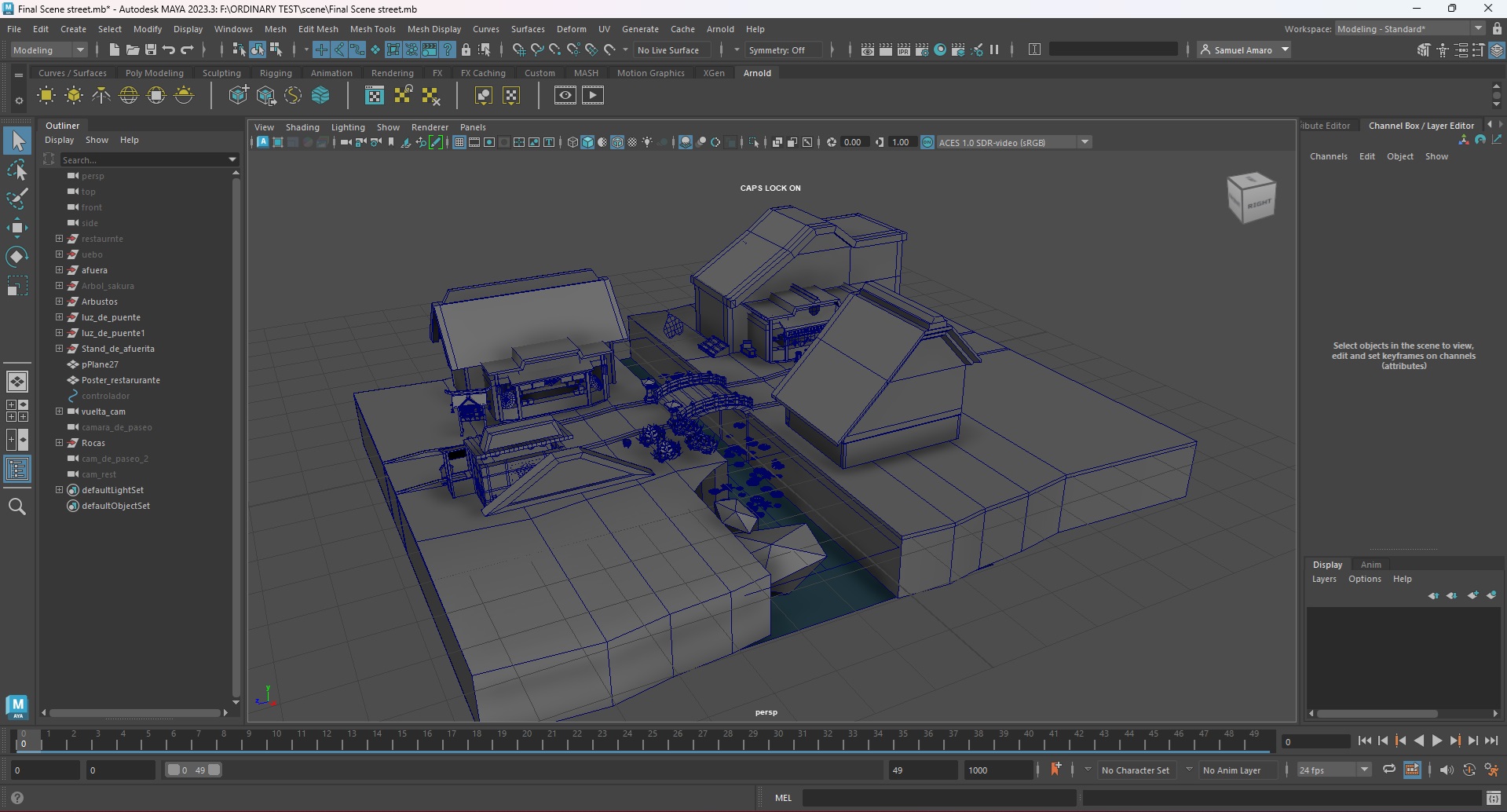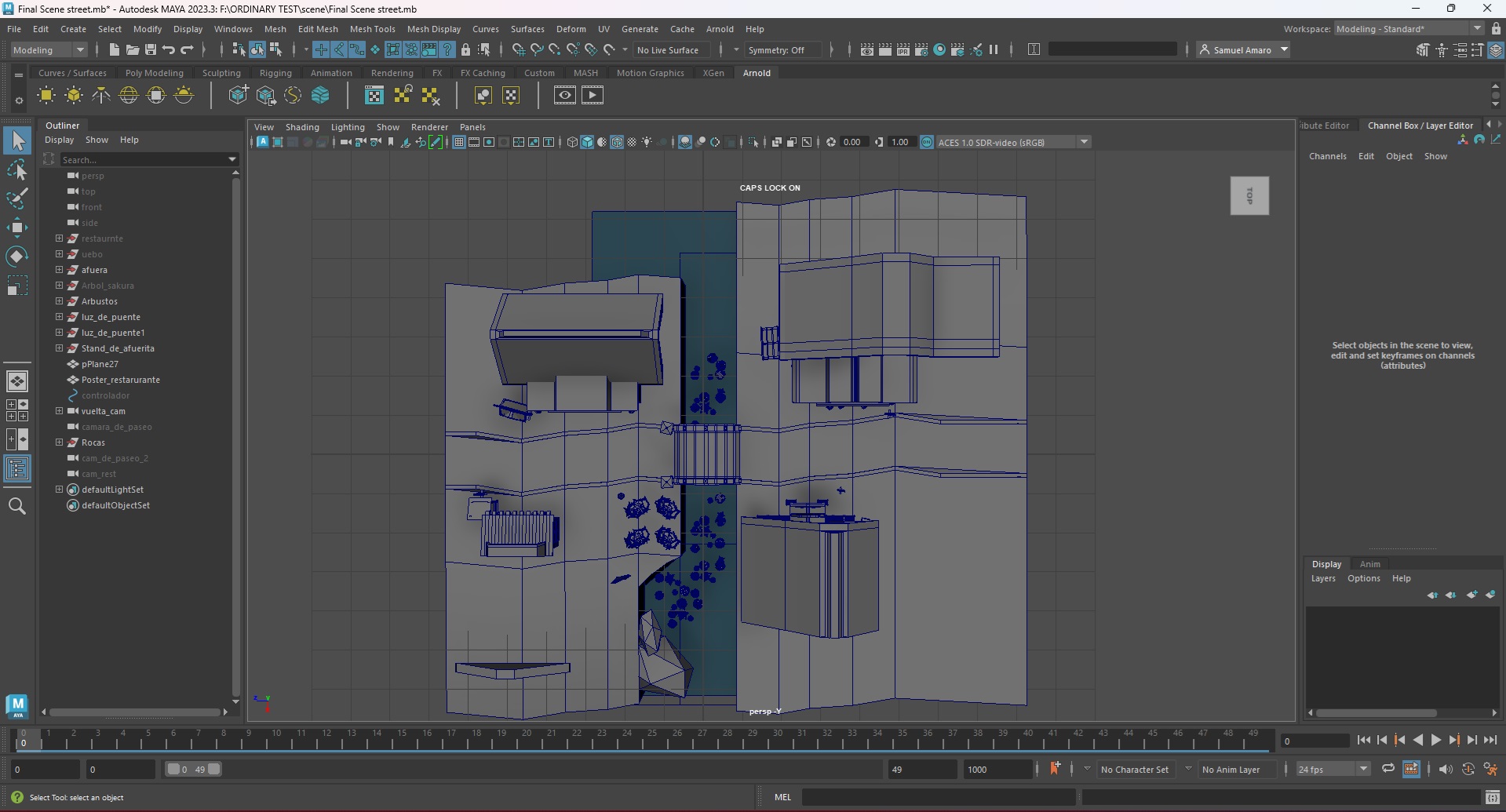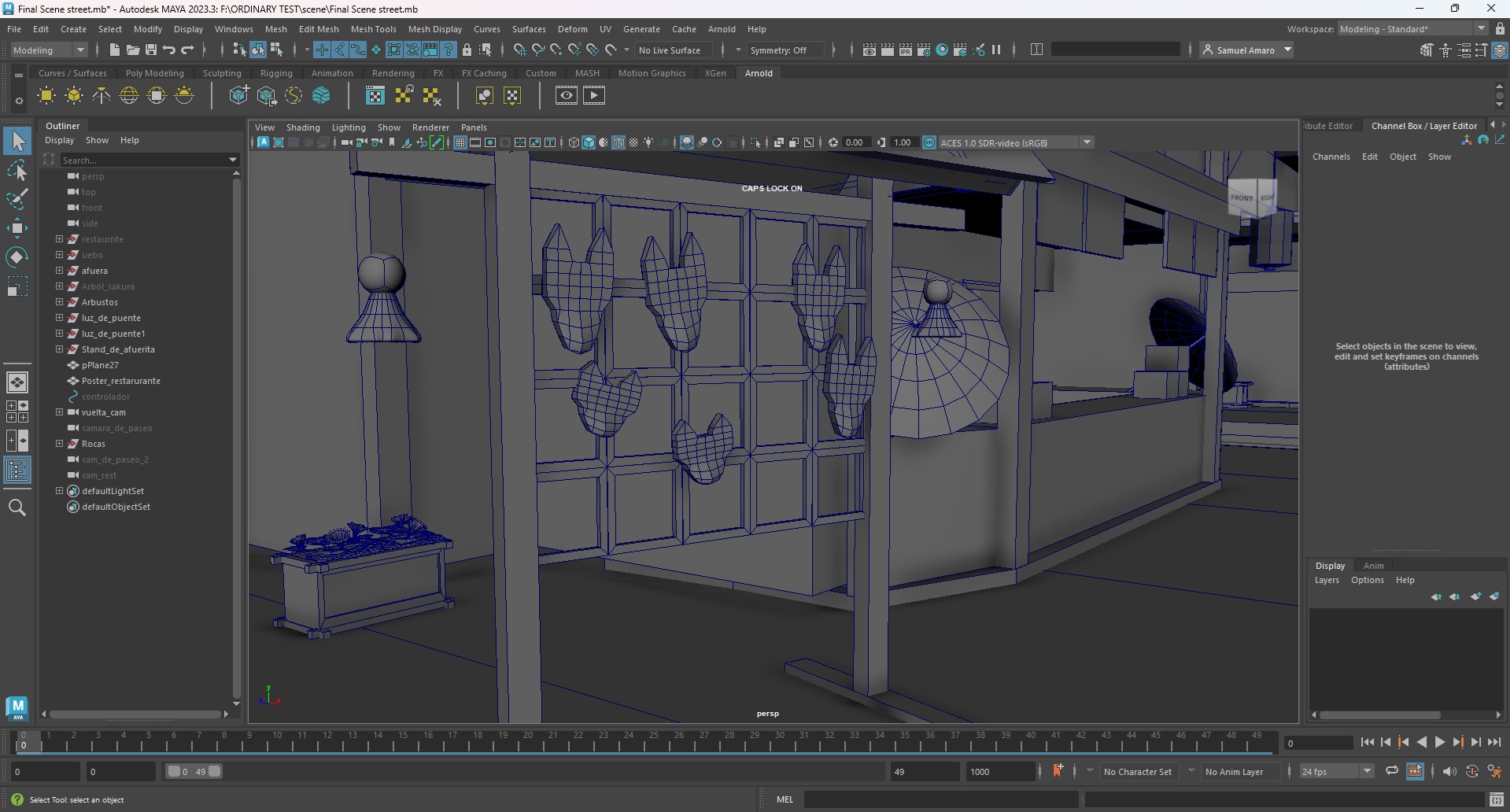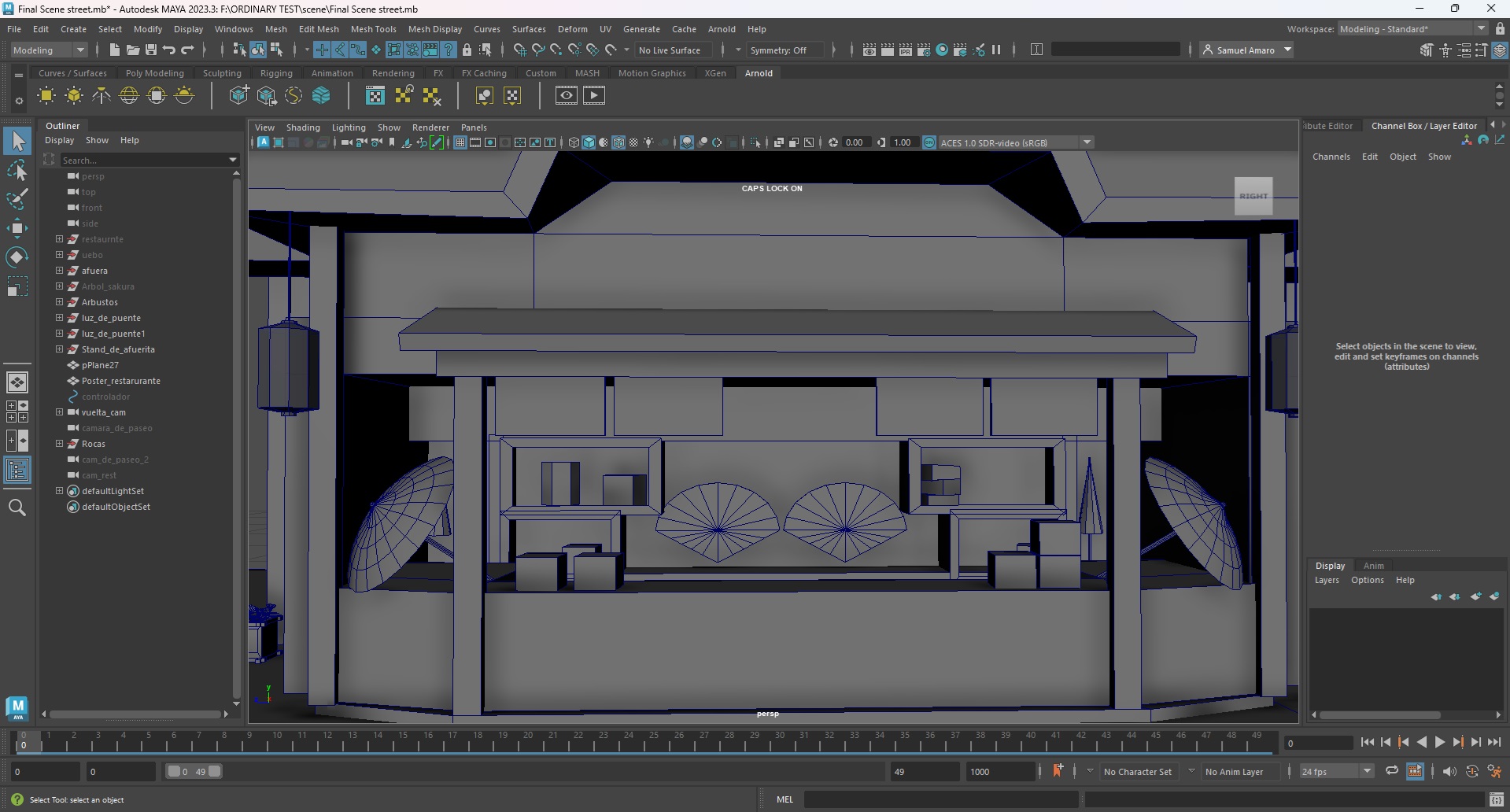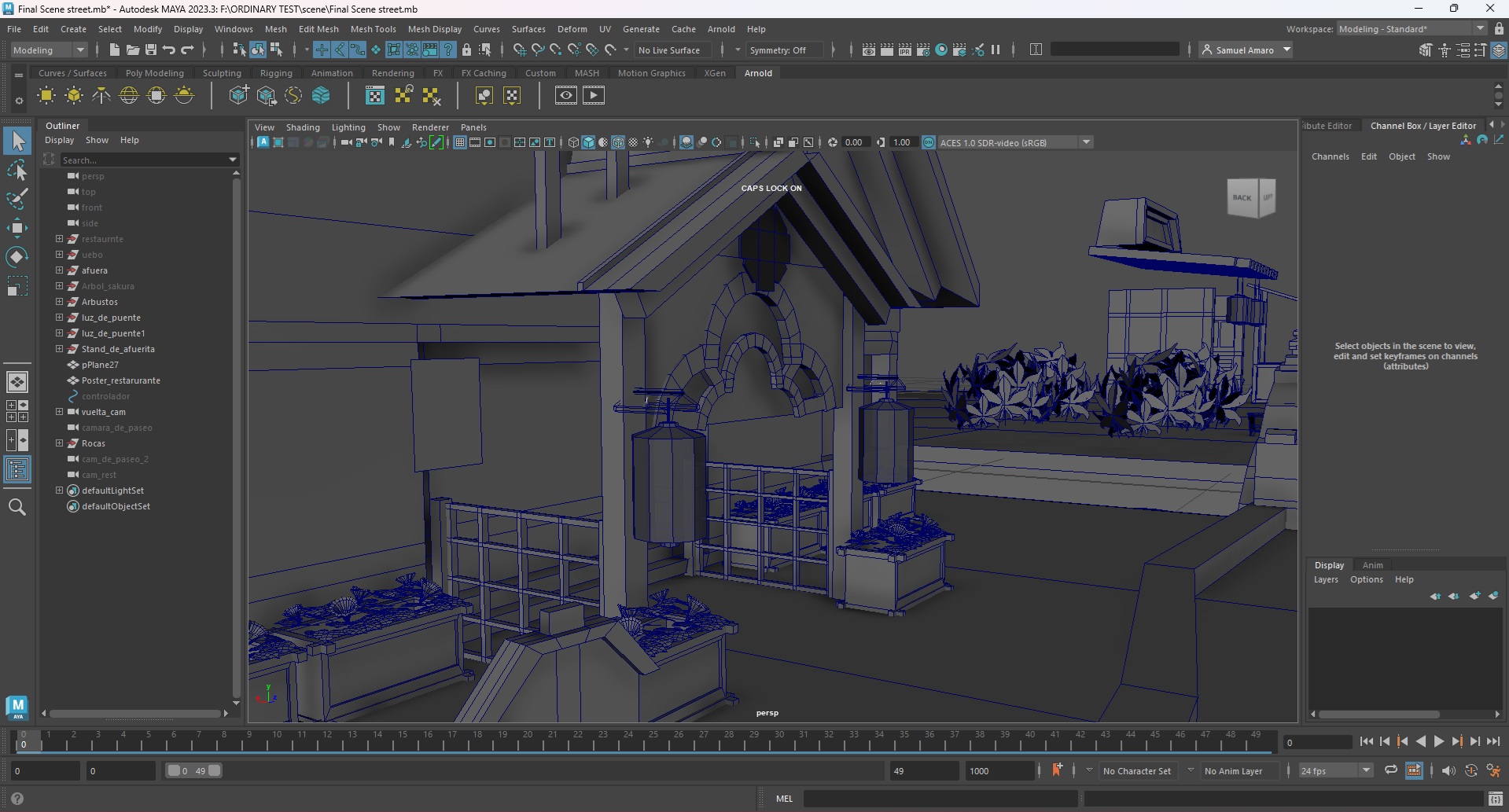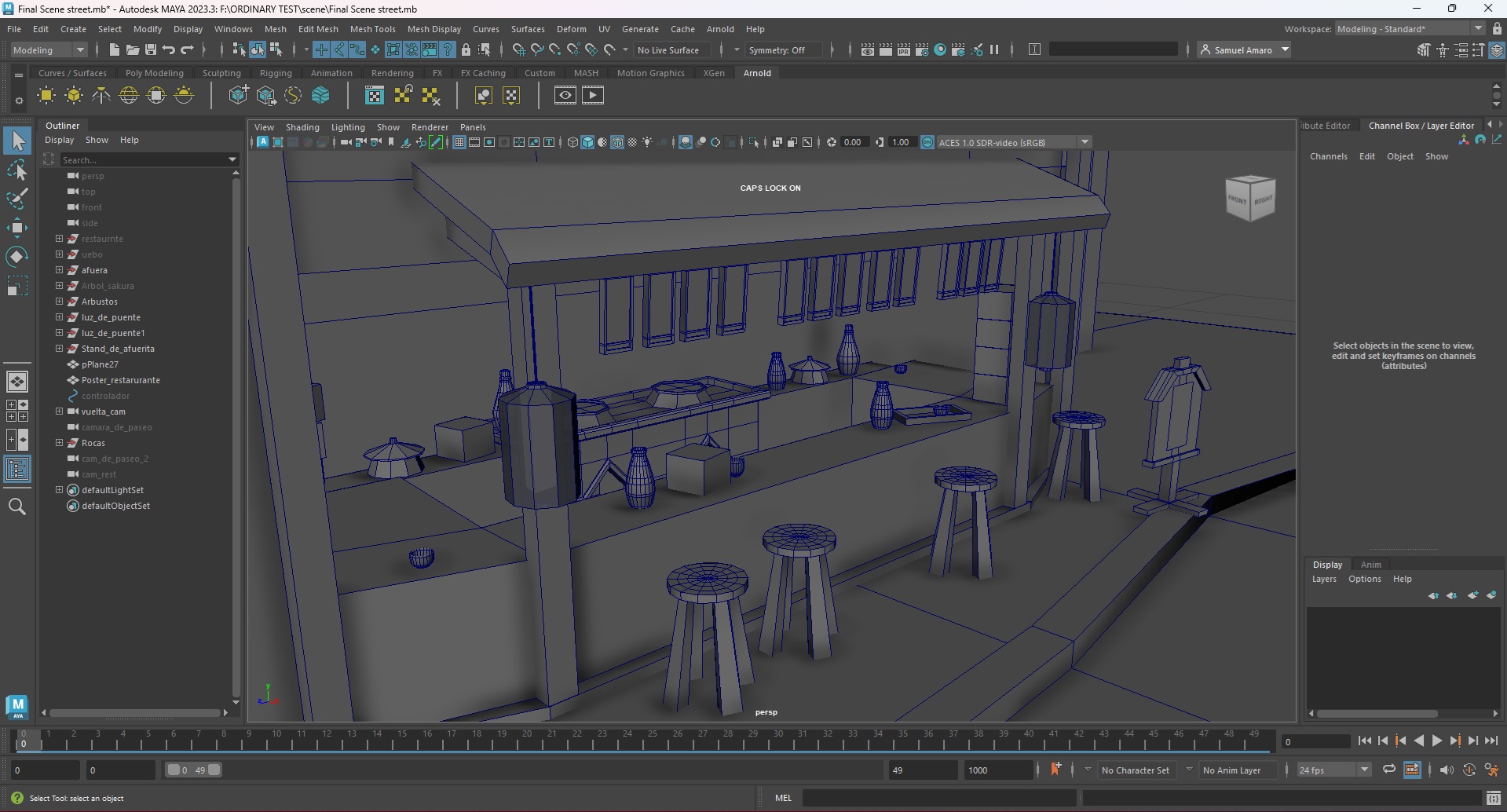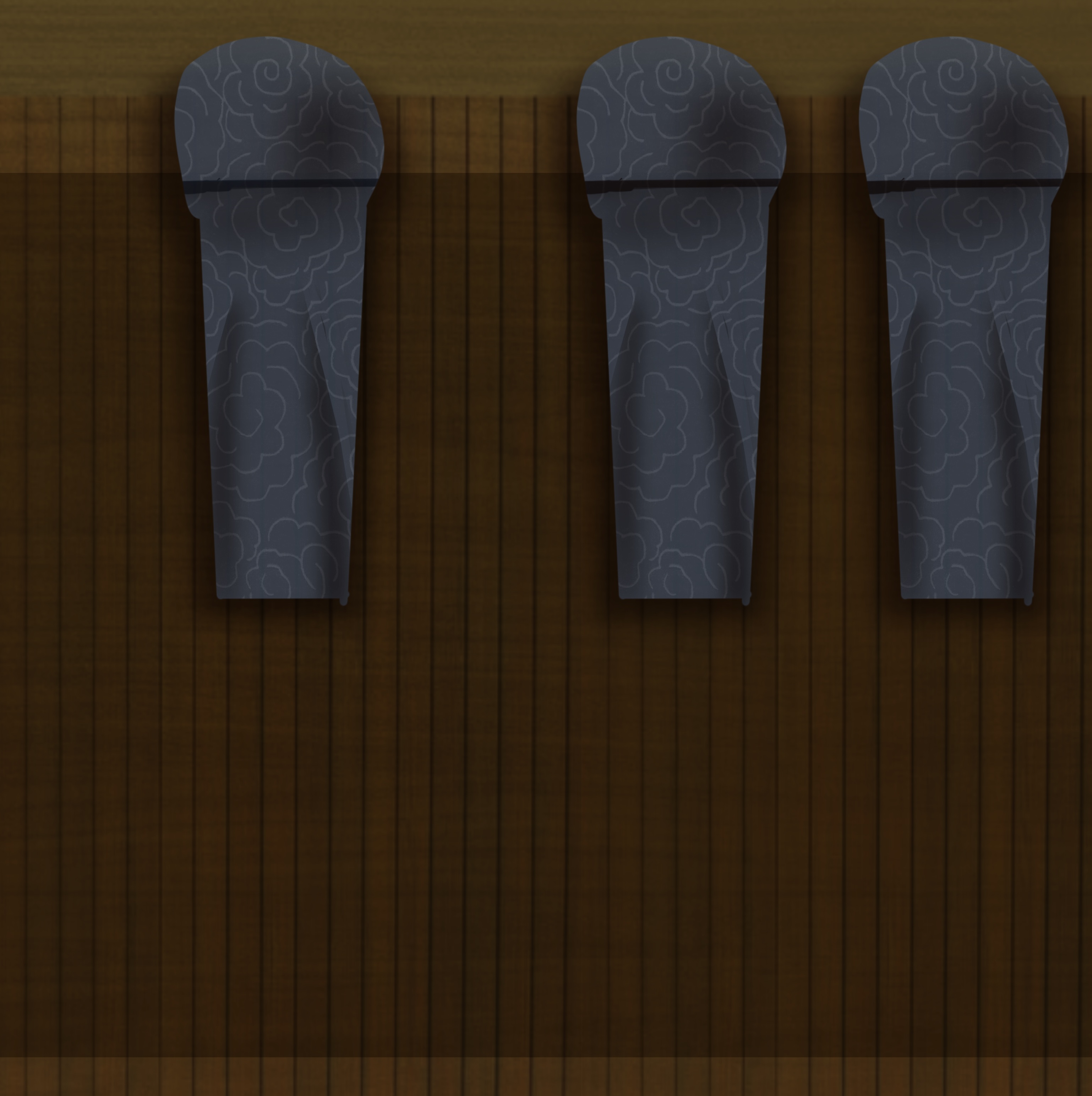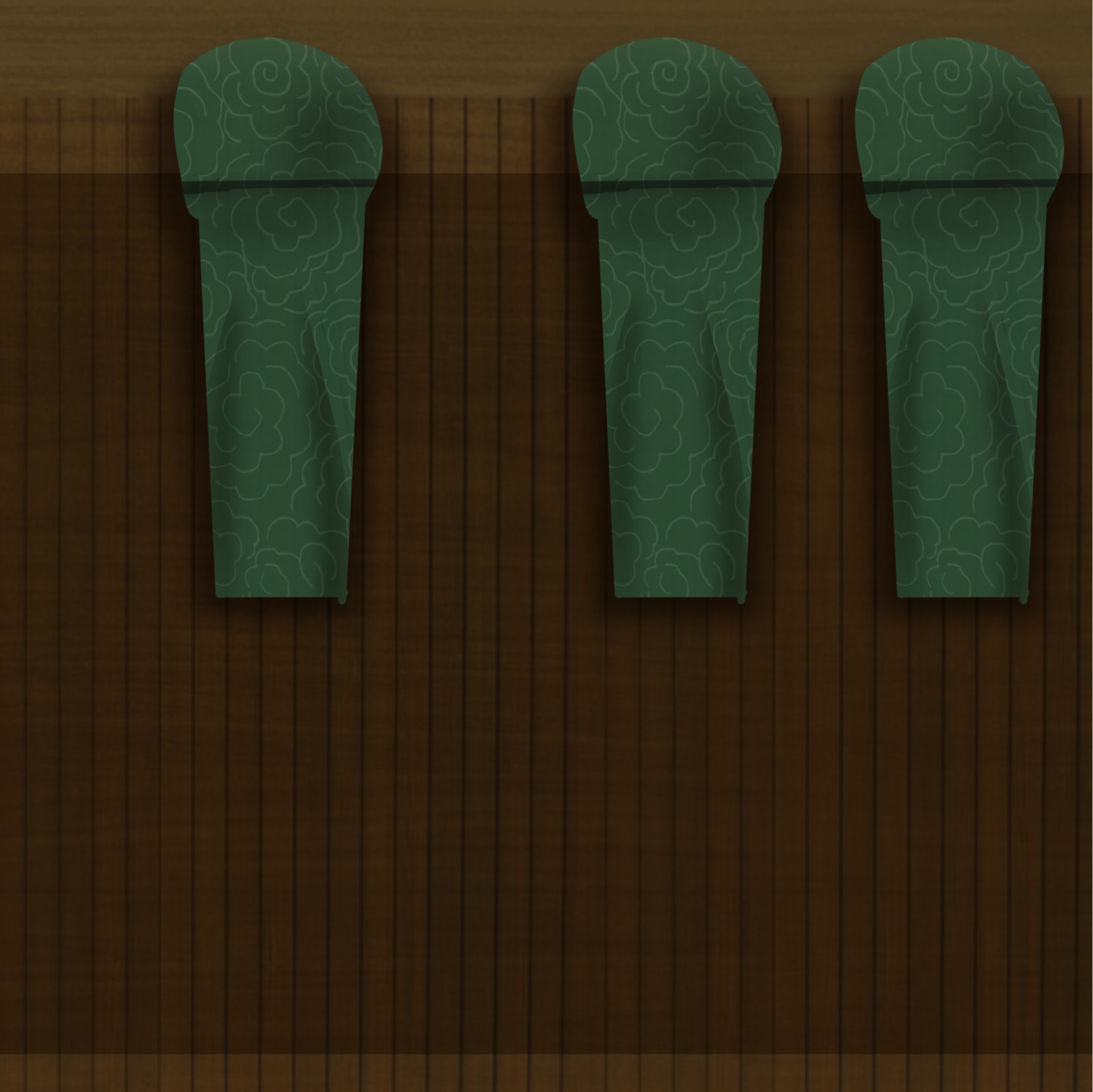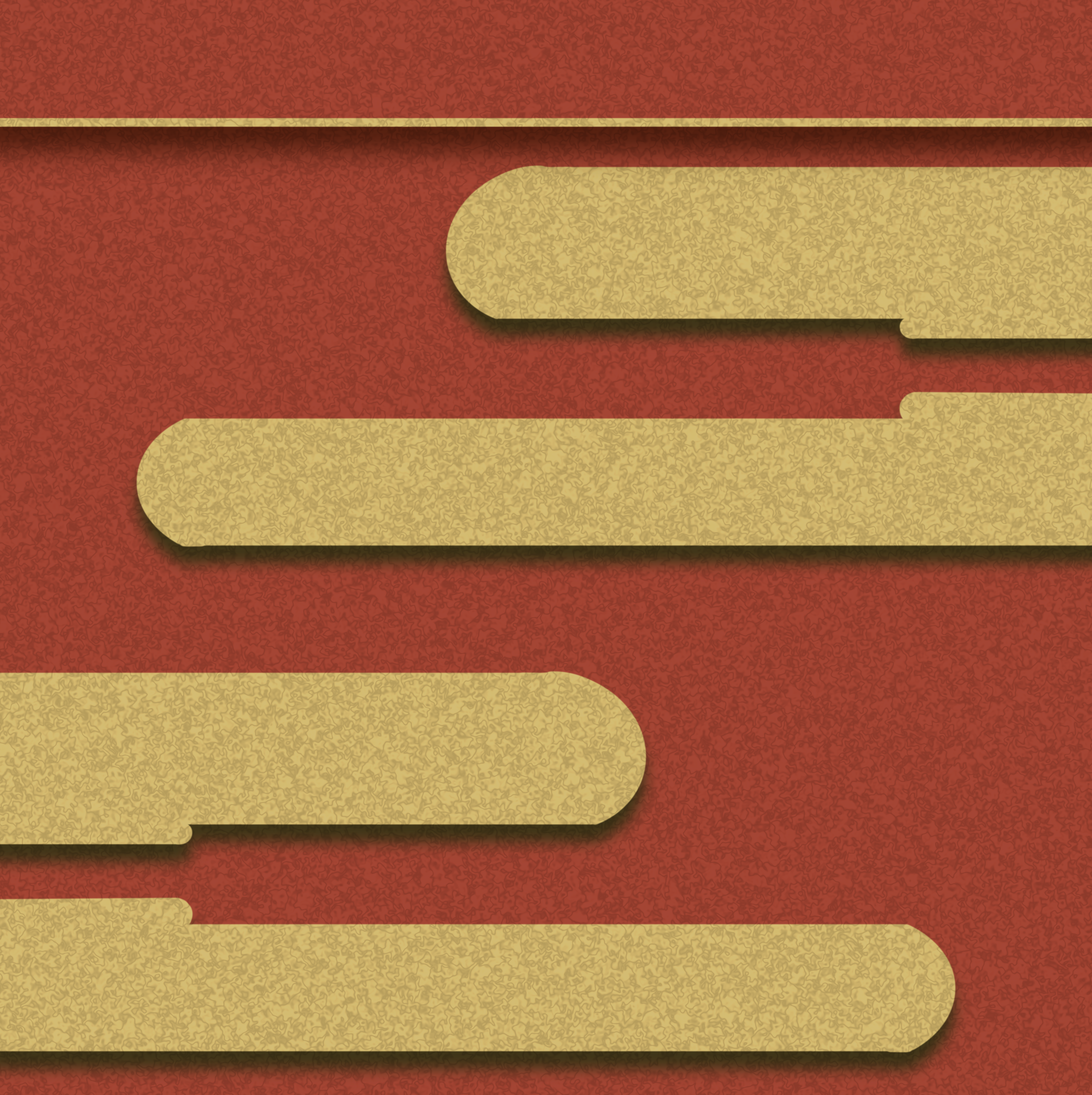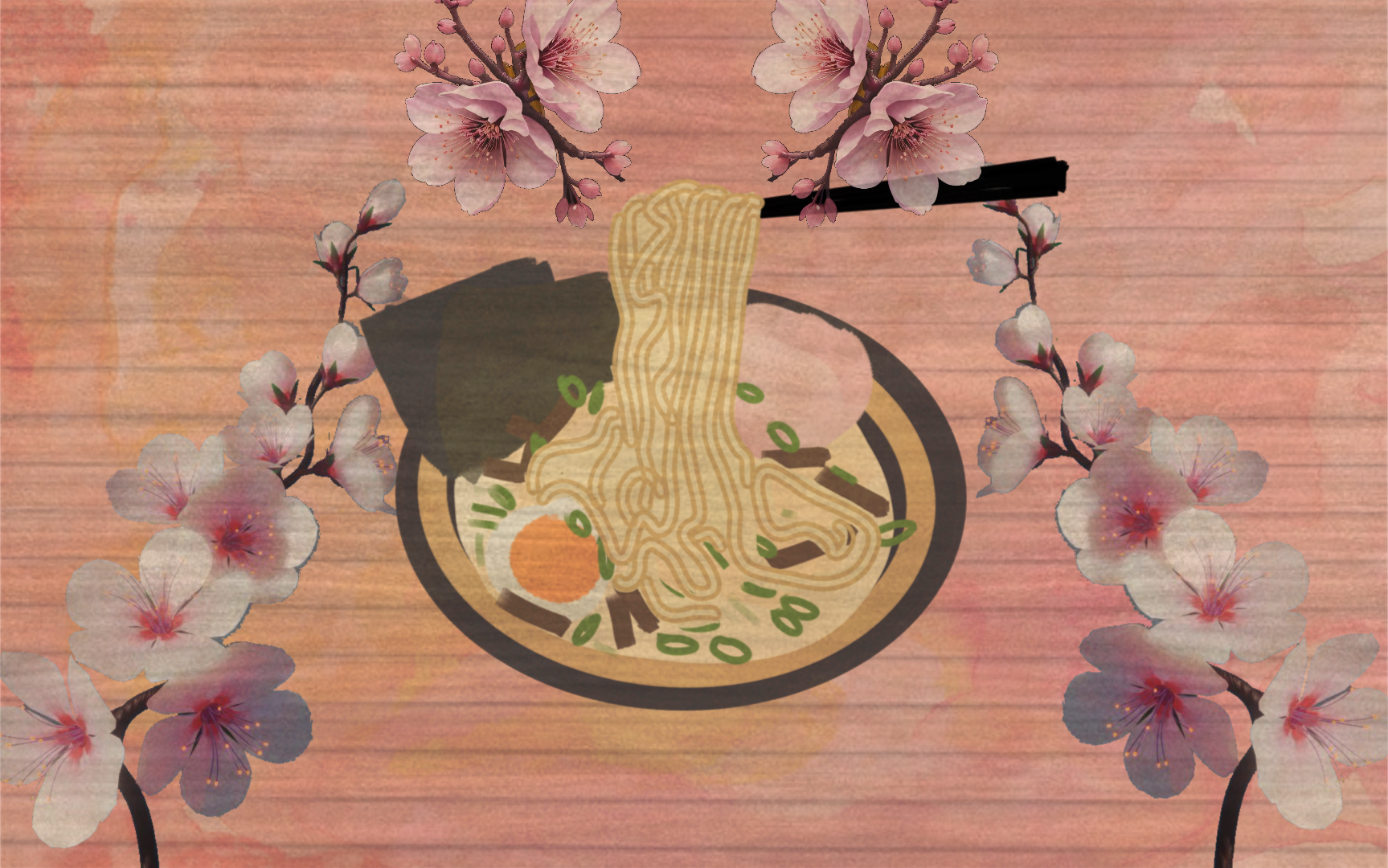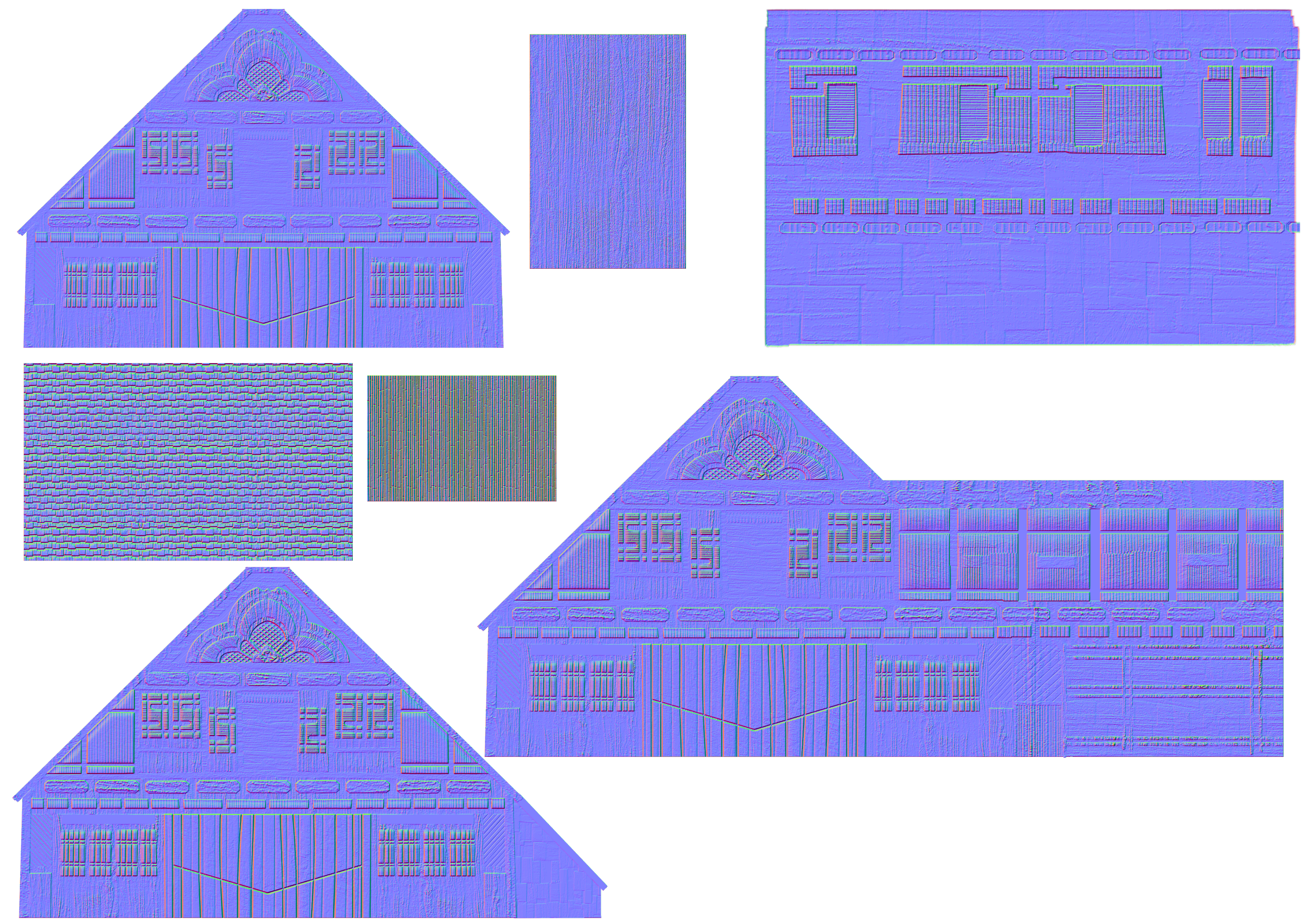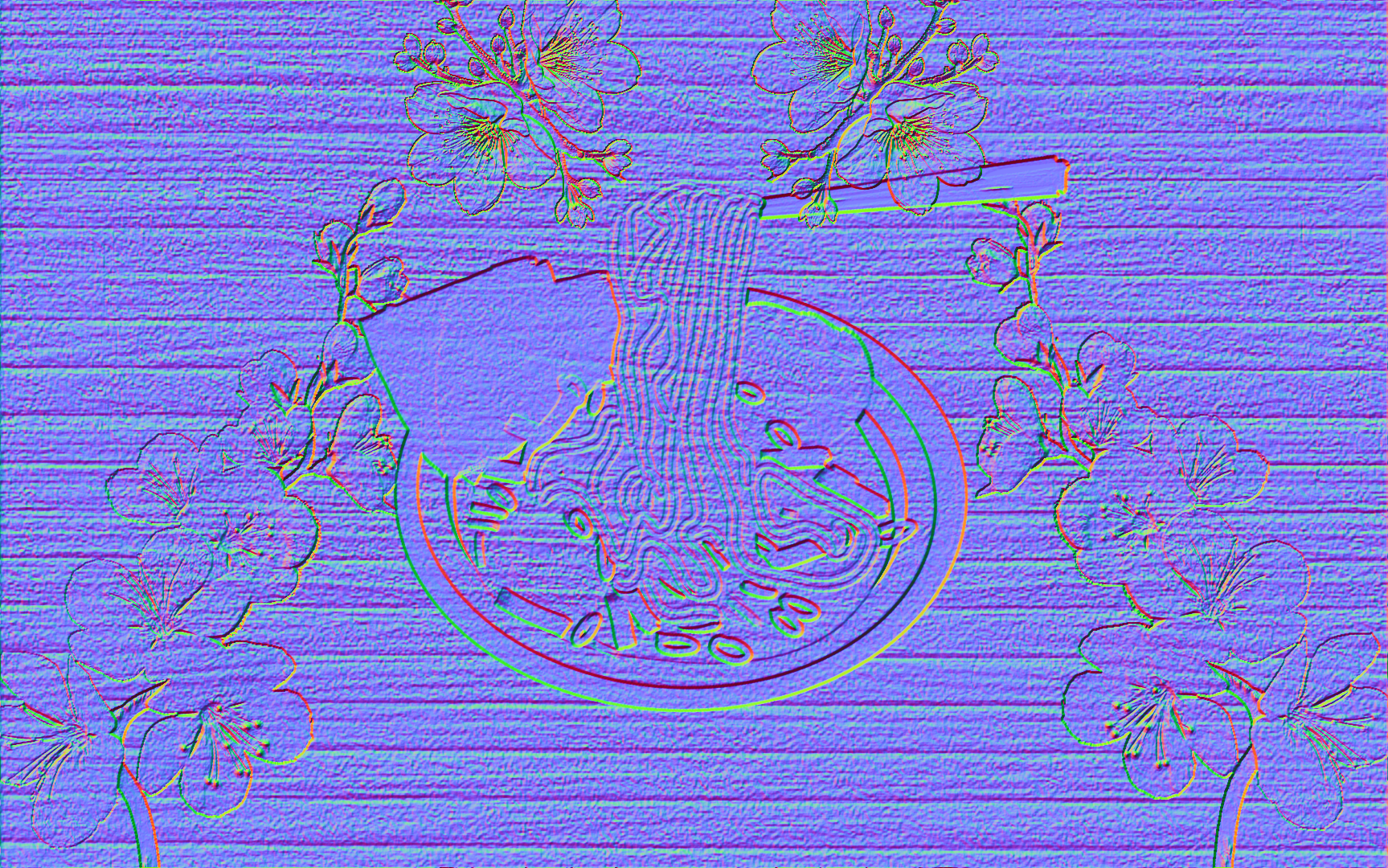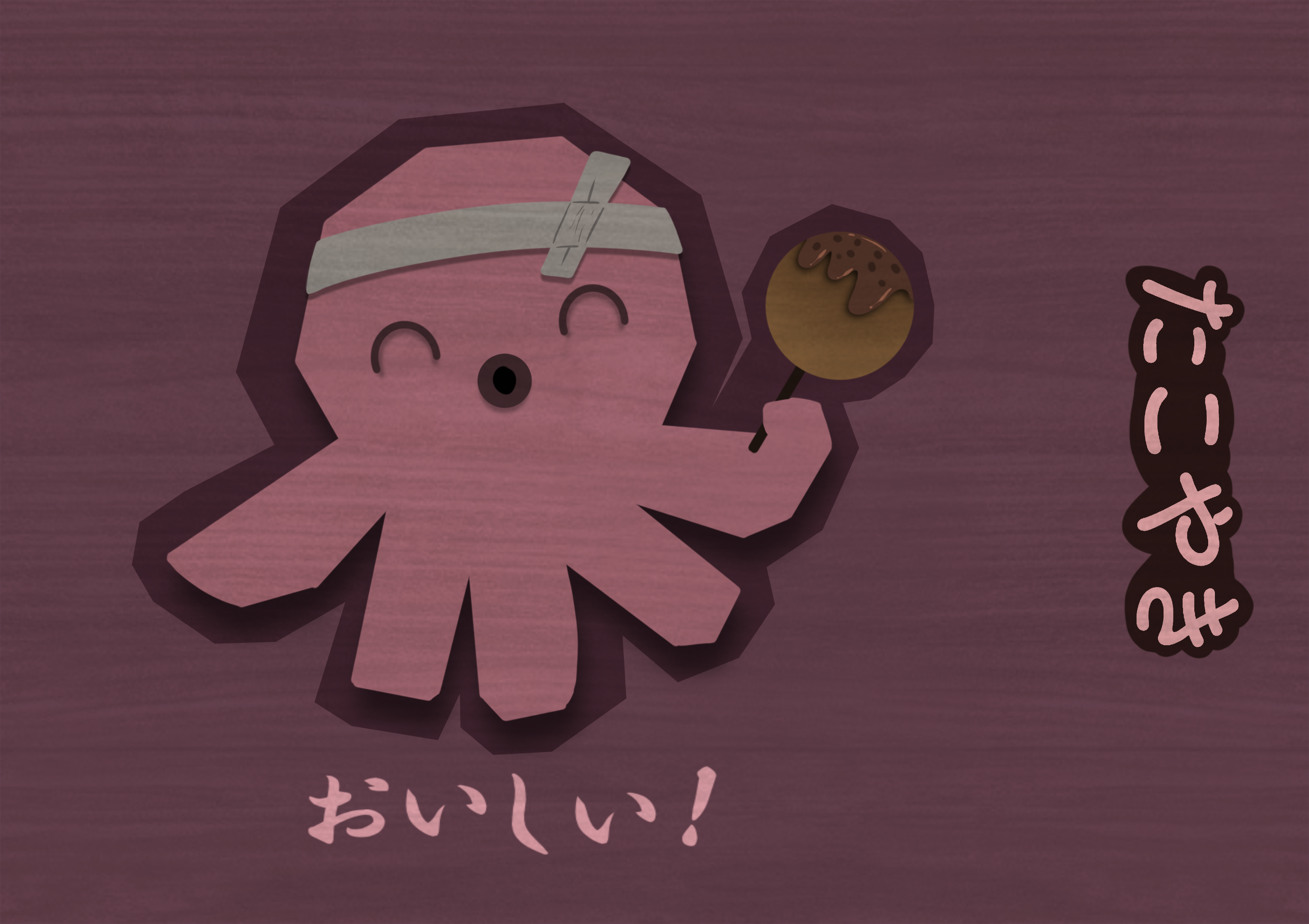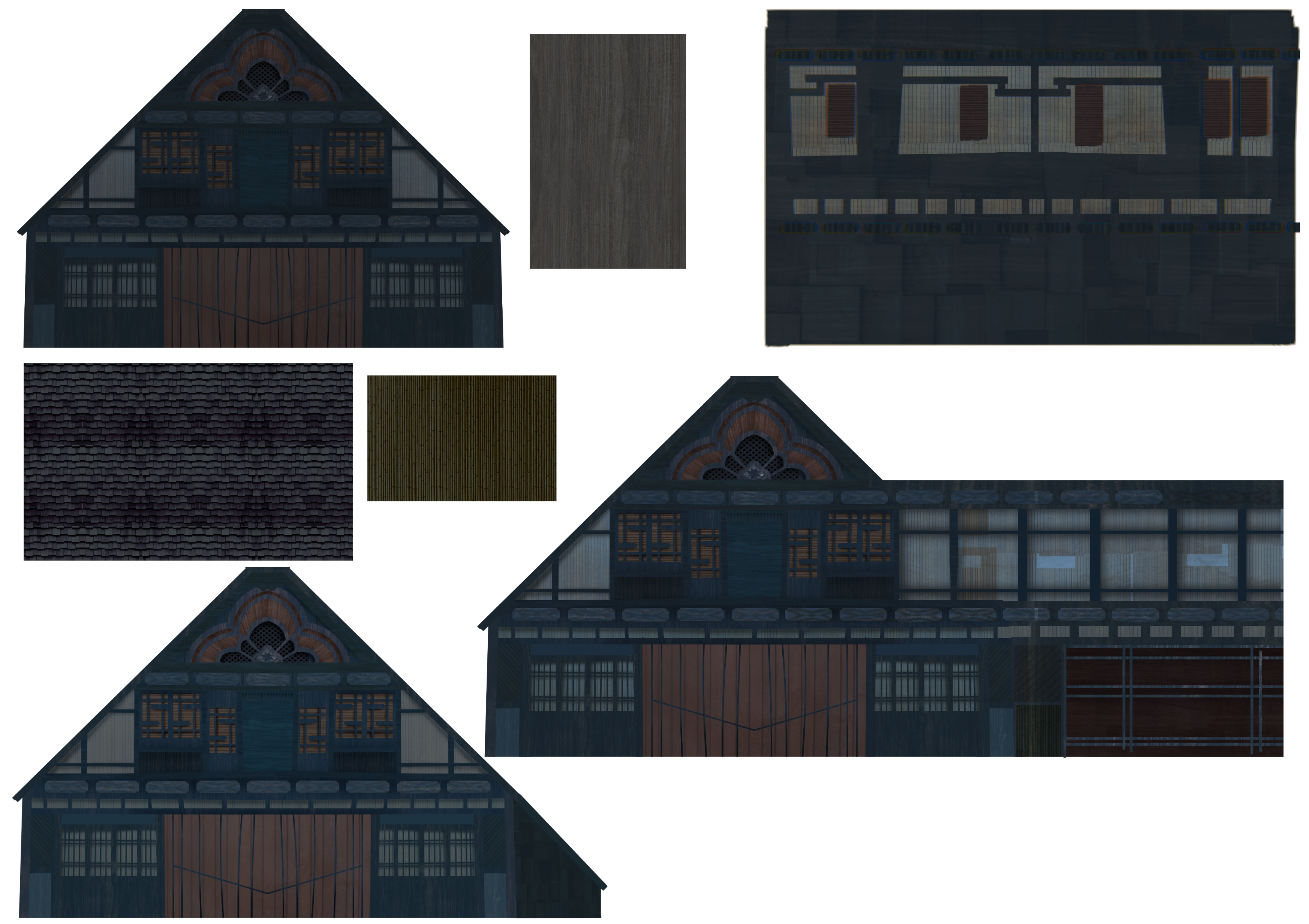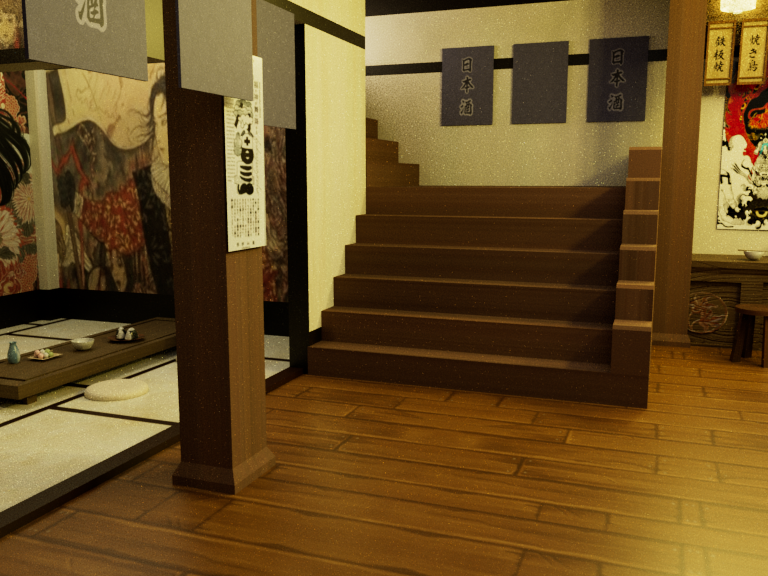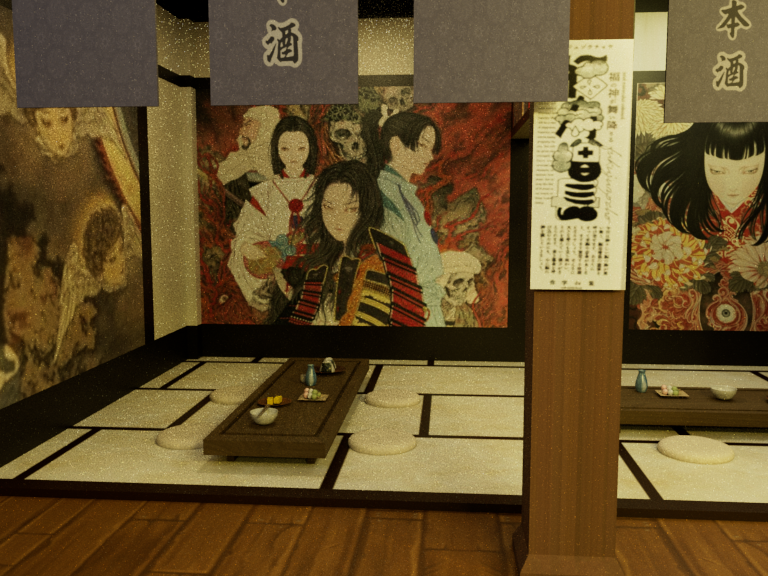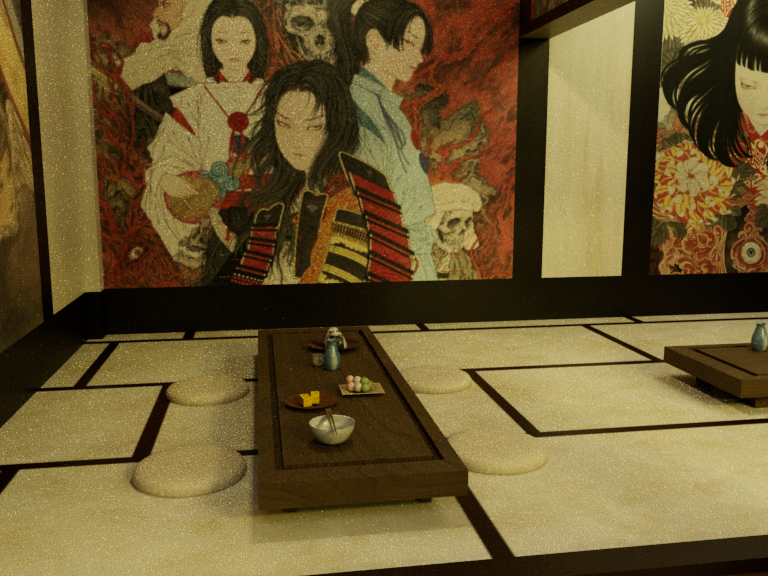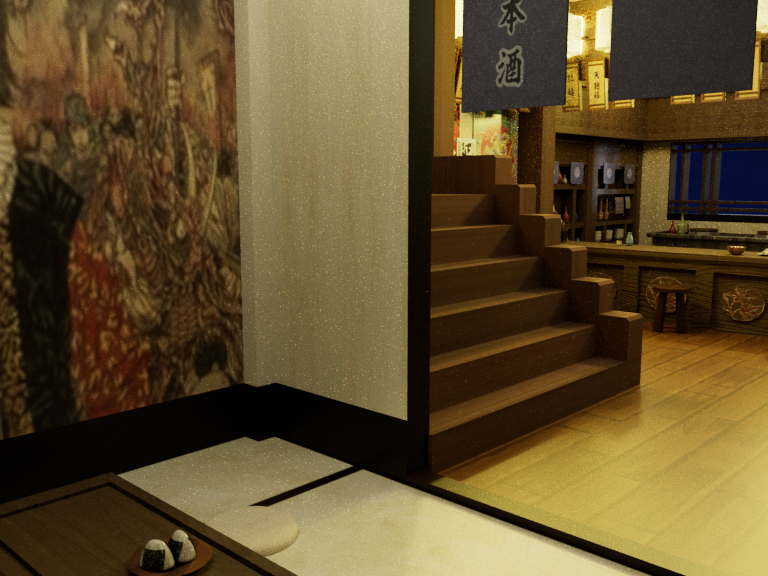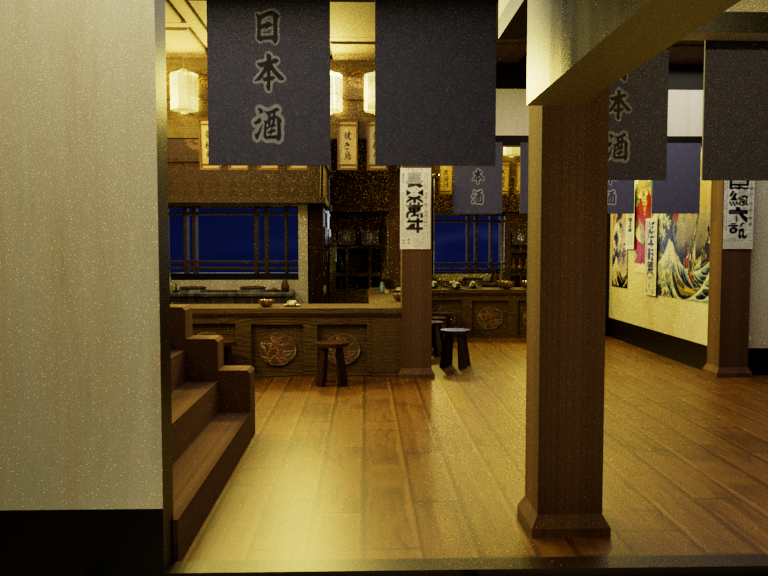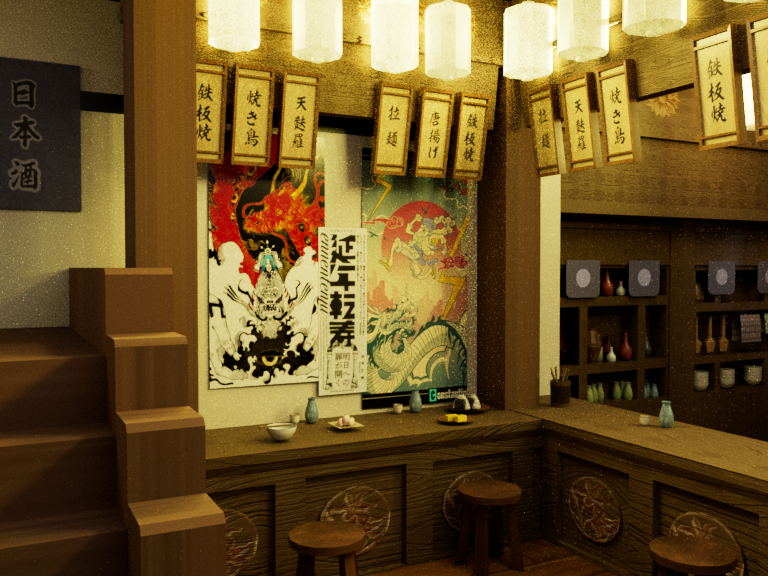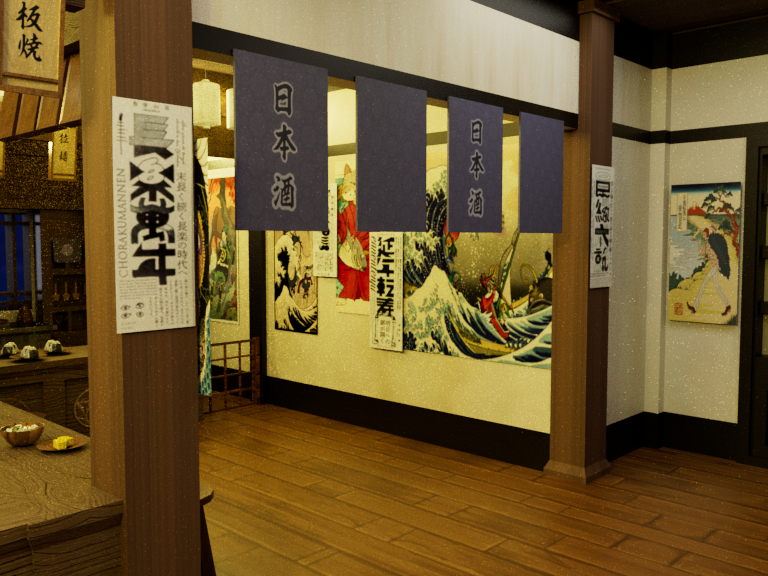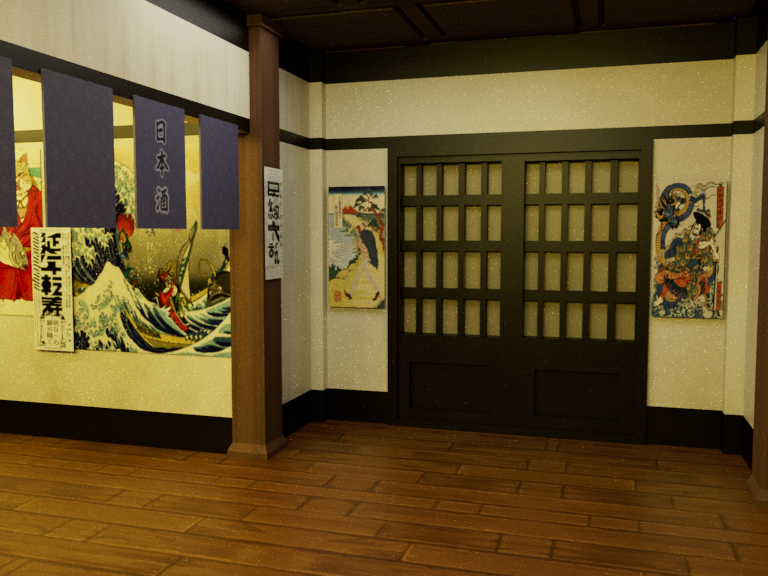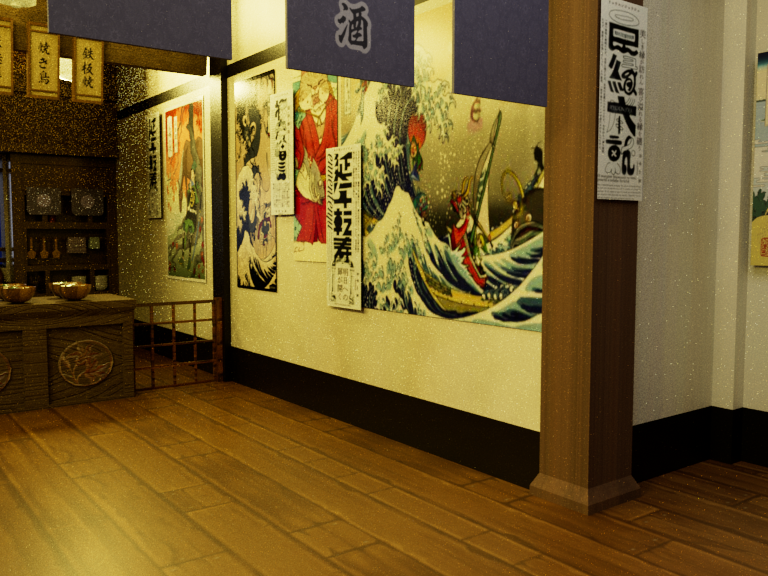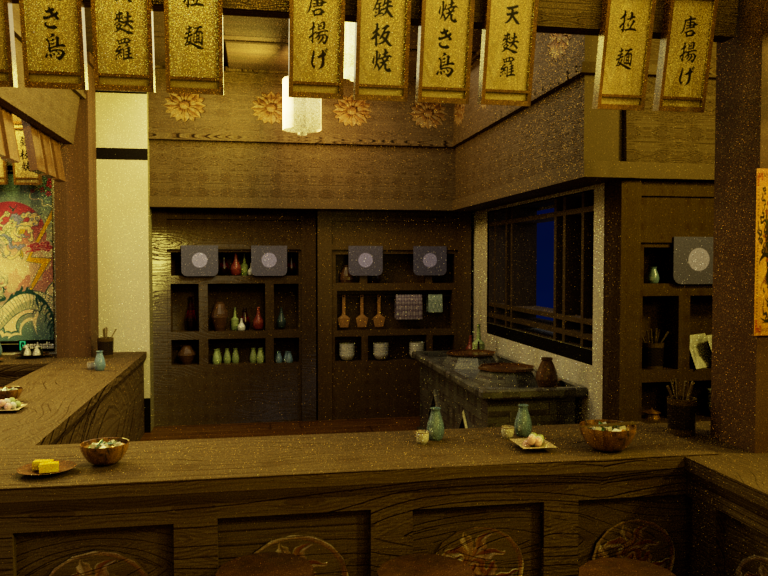Traditional Japanese environments are a visual attraction for tourism, seen in photographs or recreated through 3D modeling.
For the Digital Environments and Rendering course, the final project required recreating a free outdoor environment, with the camera passing through the scene.
Additionally, this outdoor setting had to connect to an interior structure, showcasing detailed interior modeling that adhered to the same thematic elements.
At the end of the process, students were to present their work through a project Demo Reel video.
STUDENT PROJECT BY KAREN ROJAS
For her final project, student Karen Rojas chose to recreate a traditional Japanese environment, highlighting the architecture and elements of the era.
She already possessed interior modeling skills from her previous work on a traditional Japanese restaurant.
MOODBOARD
As with any project, the initial phase involved defining what to work on, using references compiled into a moodboard.
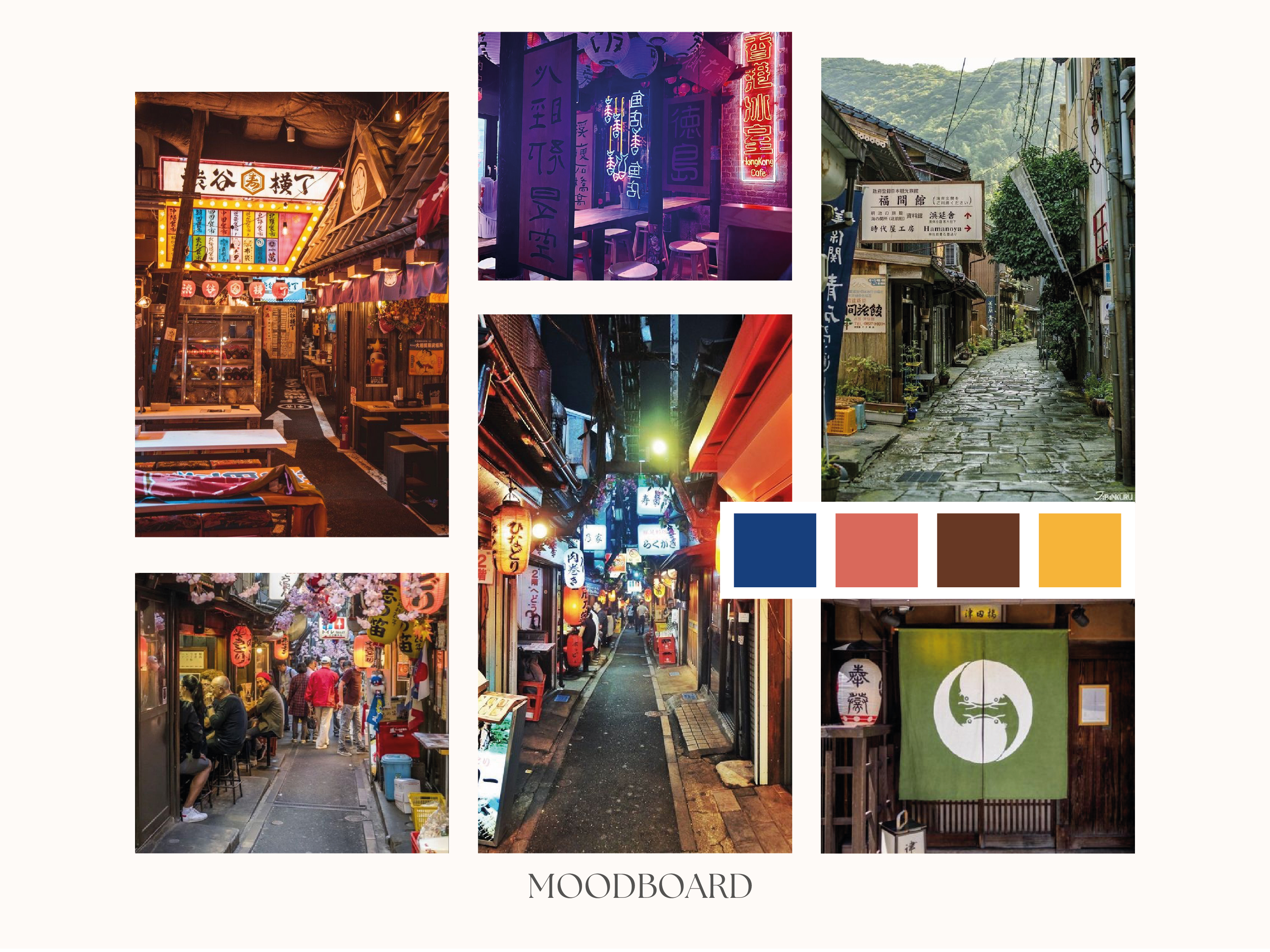
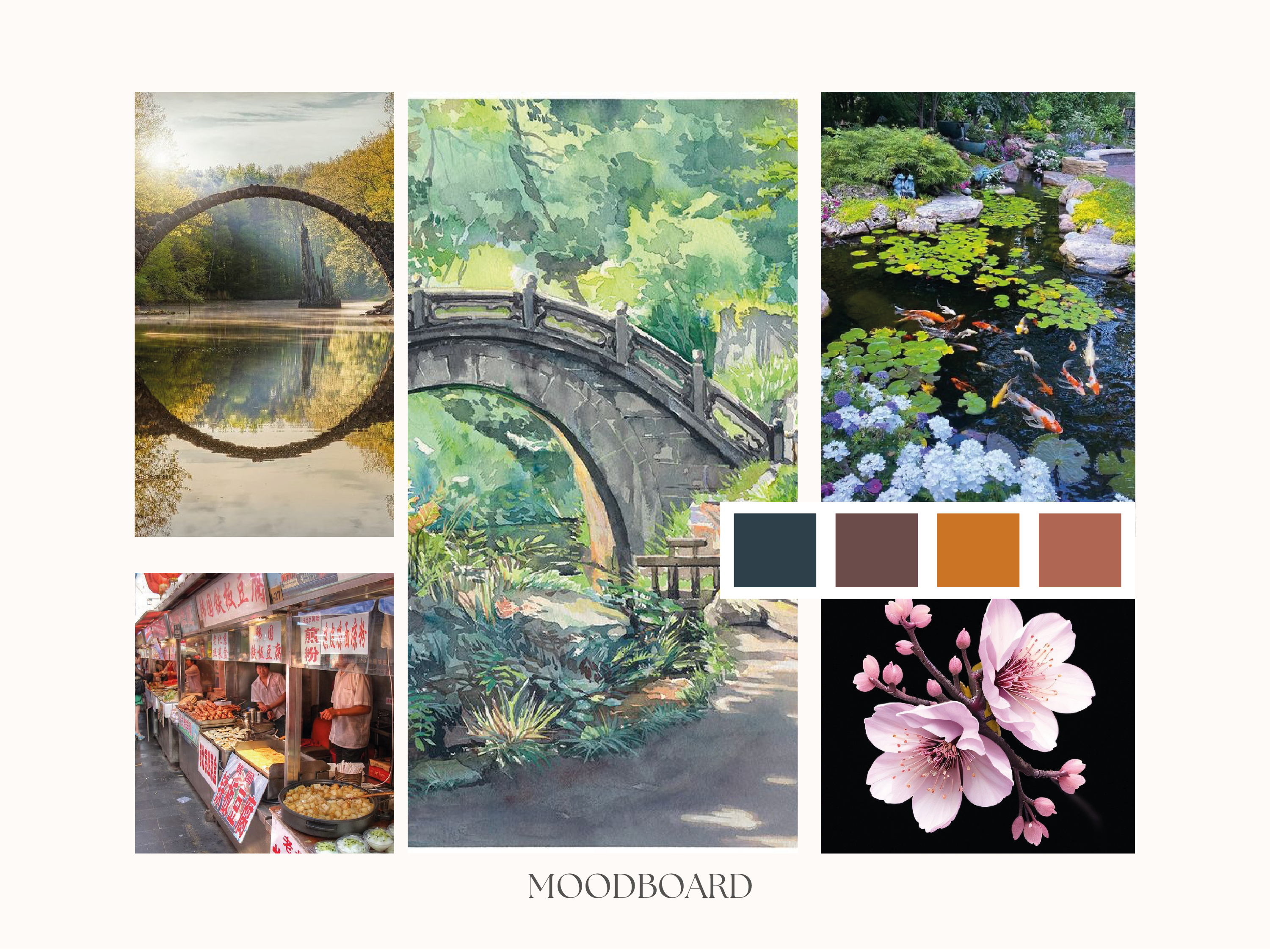
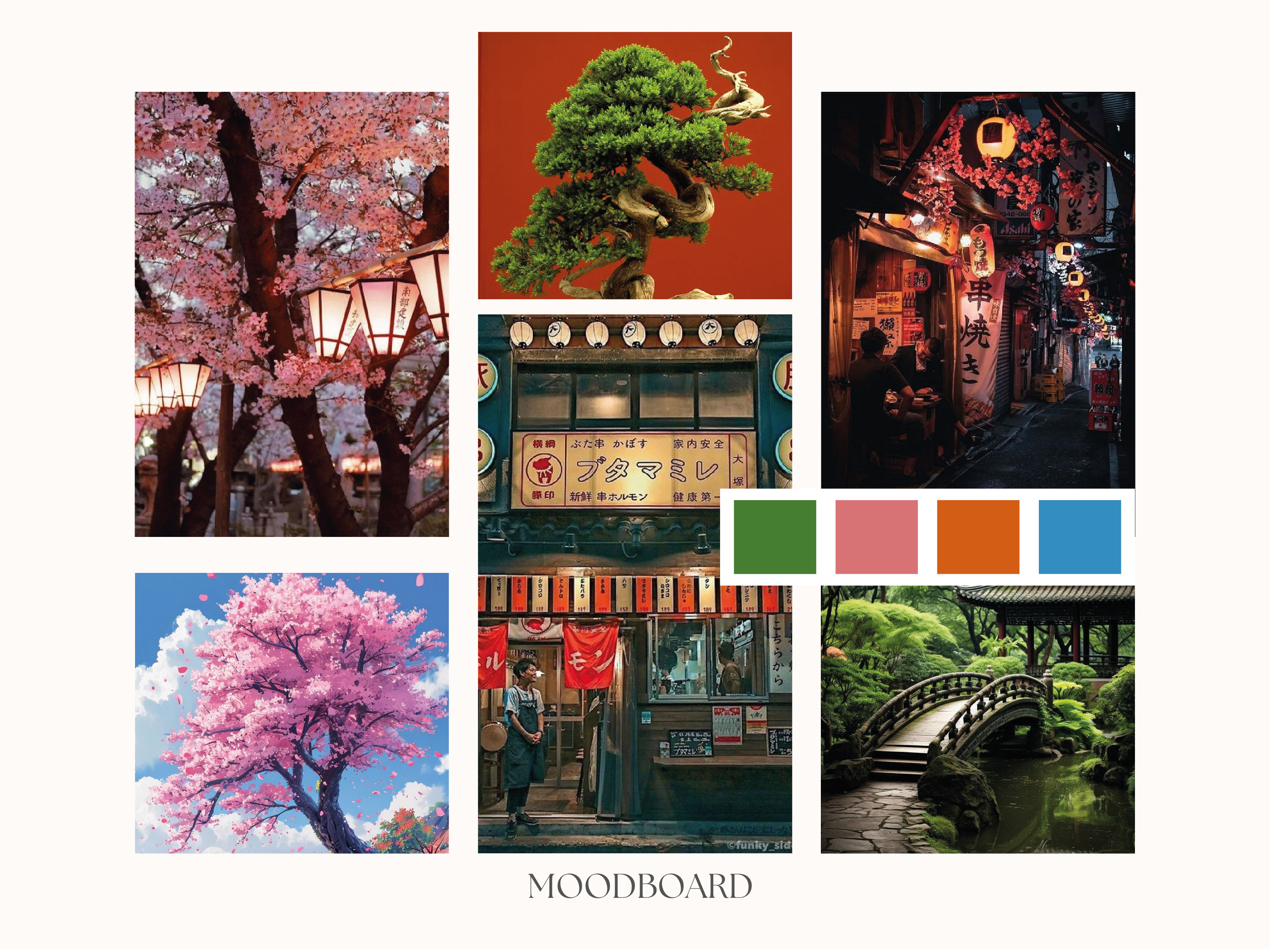

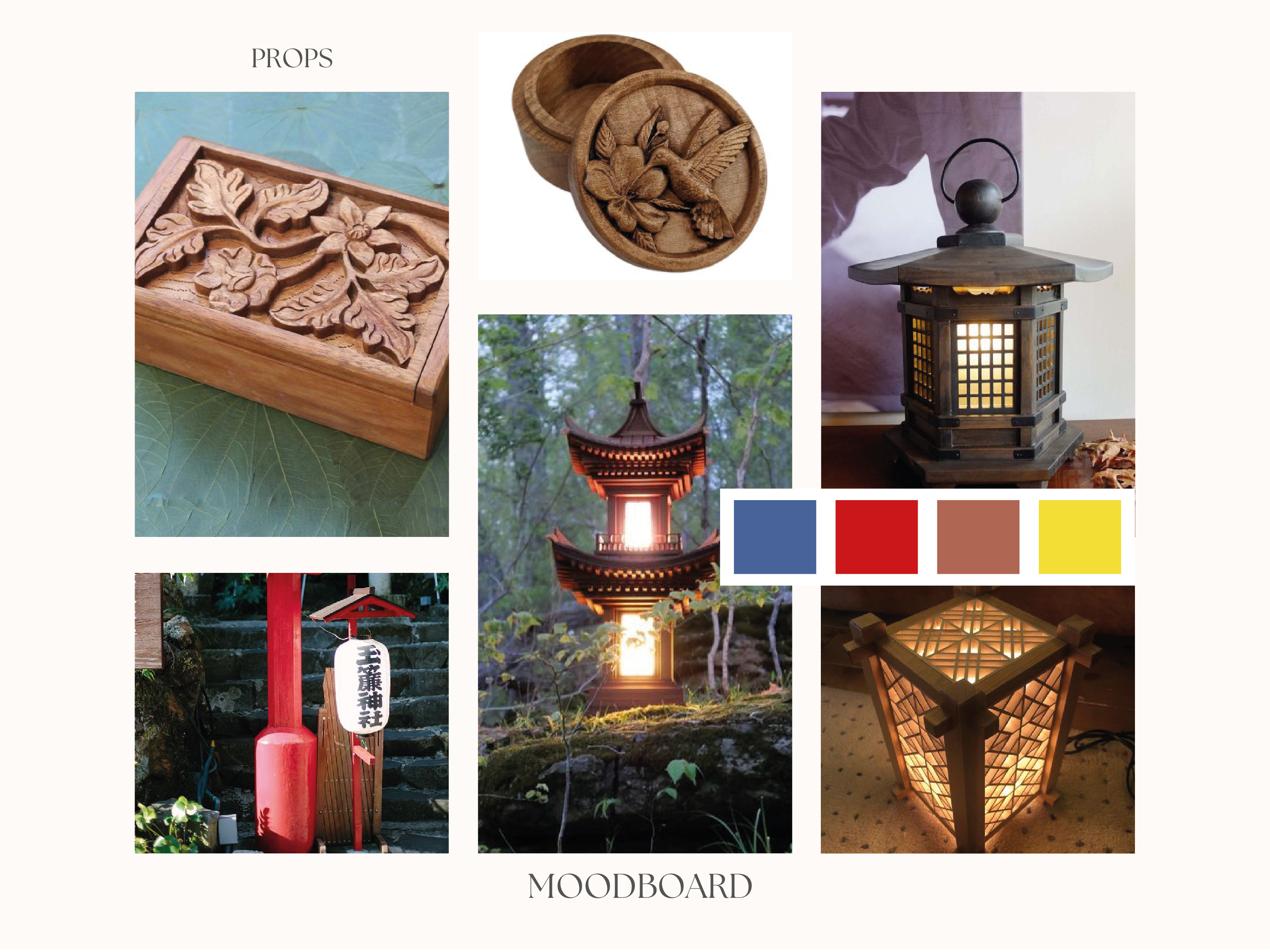

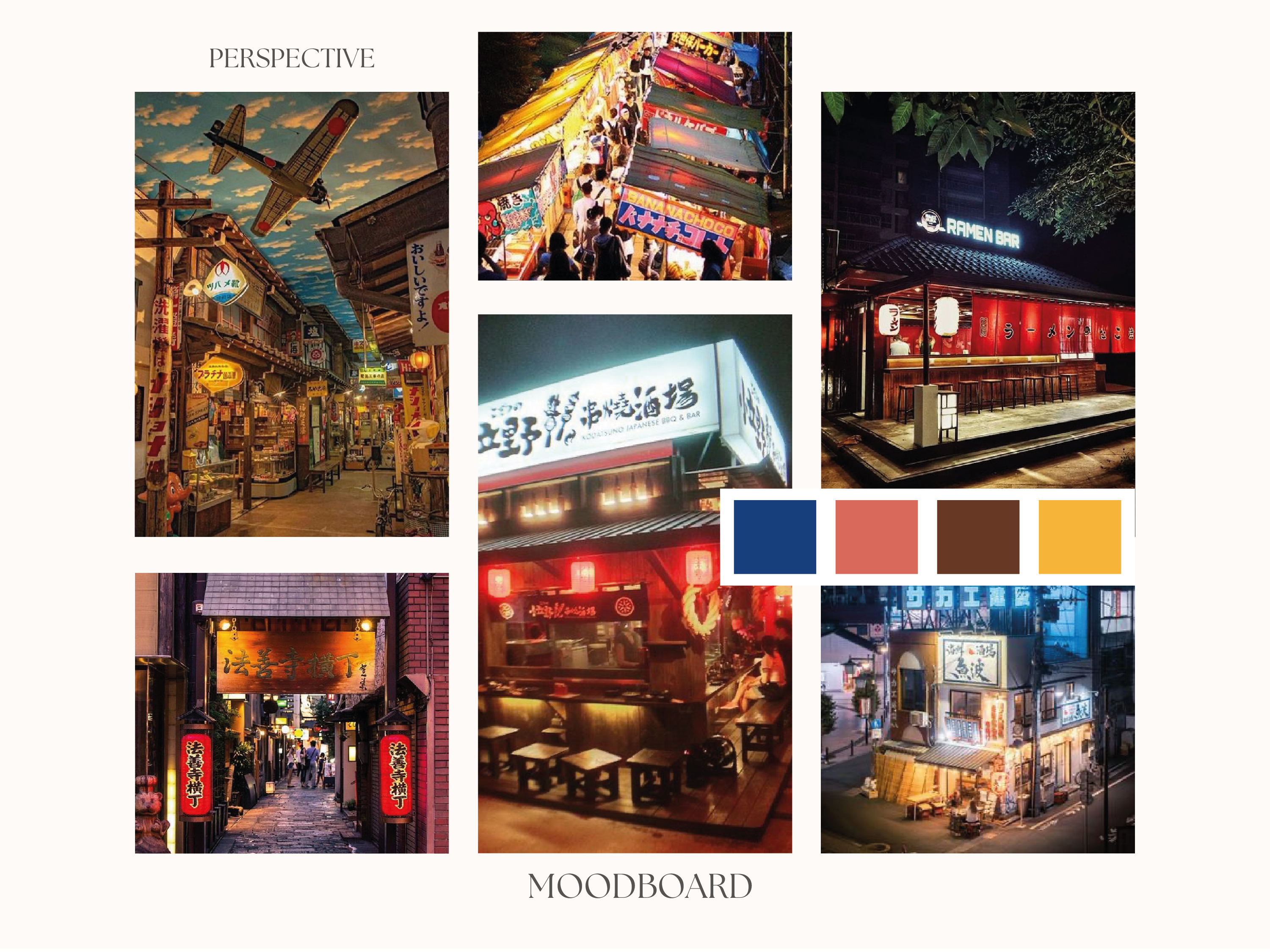
CONCEPT ART
Using these references, Concept Art was crucial in visually outlining the composition designed by the student, especially since it was modeled in 3D.
Various views of the same scene or props to be used were depicted.
PRODUCTION – 3D MODELING
With a clear vision, the student began the modeling process, creating all the scenarios, buildings, and props needed for her environment.
UV MAPS – SHADER & TEXTURING
Following the completion of the 3D modeling, the student proceeded with UV mapping for each element.
A helpful tip: before duplicating an object, ensure its UV mapping is completed to preserve its properties.
Then she applied shaders to these maps, enhancing the textures and adding intricate details to her models.
LIGHTING AND RENDERING
Once the scene was modeled, the student carefully placed lights not only to illuminate but also to convey the intended visual language.
Through strategic use of lighting and tones, she effectively conveyed a nighttime ambiance and a sense of tranquility to the viewer.
To complete the project, the student set up cameras for rendering, capturing the final images that showcased her efforts.
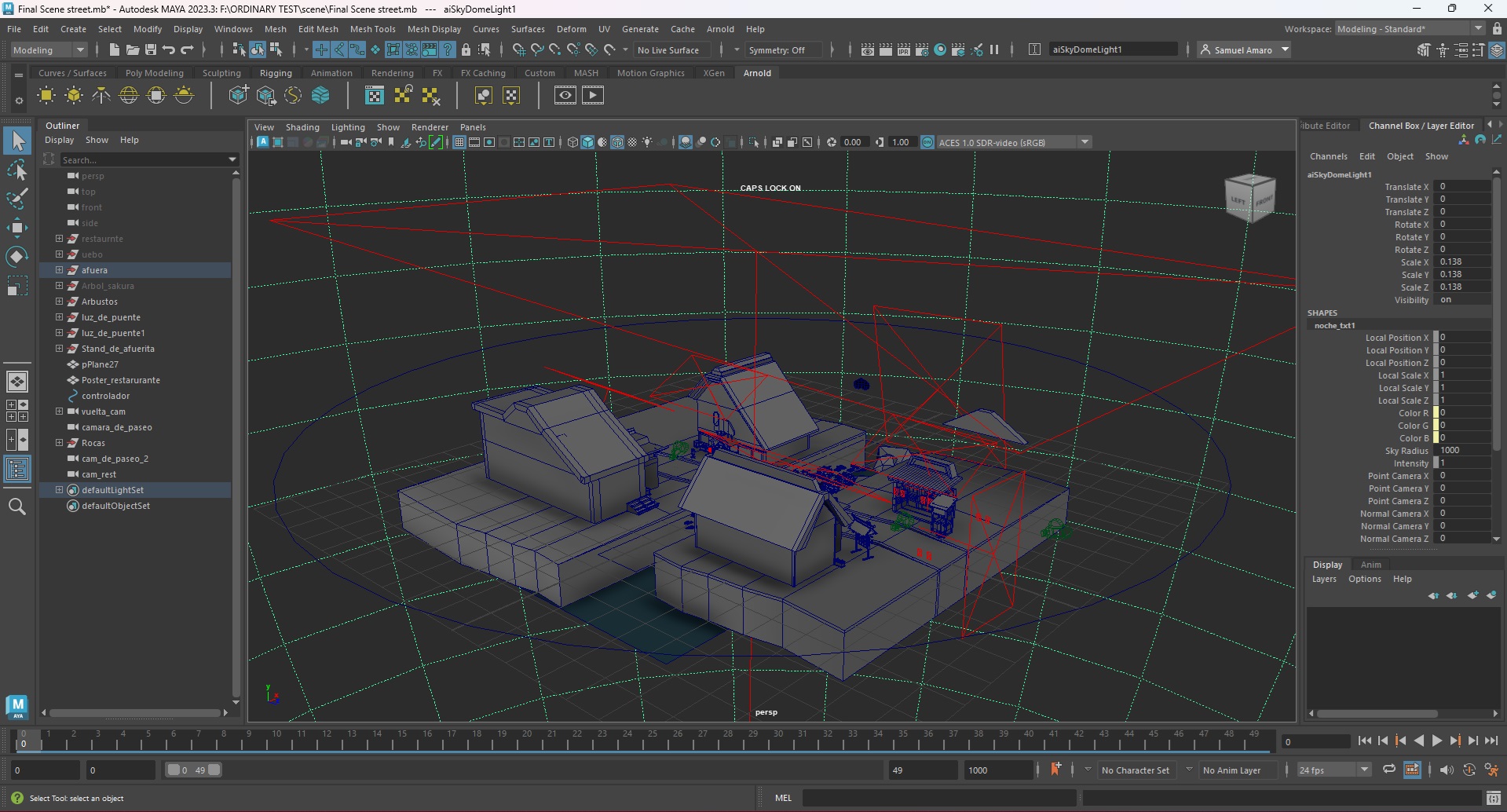
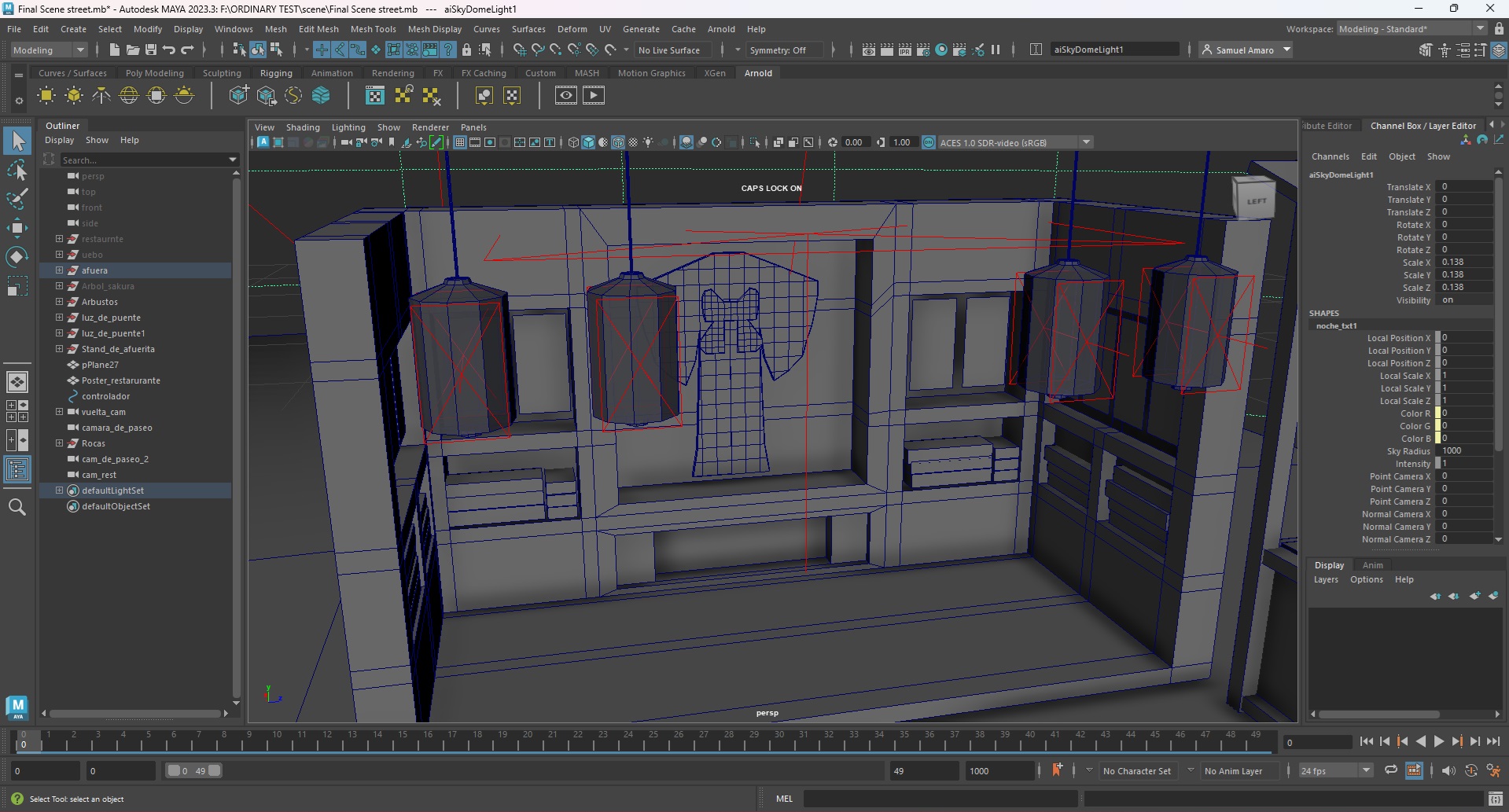
VIDEO AND DEMO REEL
To present her work effectively, the student created a video showcasing camera movements animated to highlight her environment.
Additionally, she included a turntable animation displaying her models in clay (AO), wireframe, and finished textured forms.
This comprehensive approach provided a dynamic presentation of her work.
Undoubtedly, the entire process was labor-intensive, but the results speak for themselves.
This is the final result.
Source: Student´s work
Bachelor’s Degree in Animation and Digital Design
More news about Animation and Digital Design…


